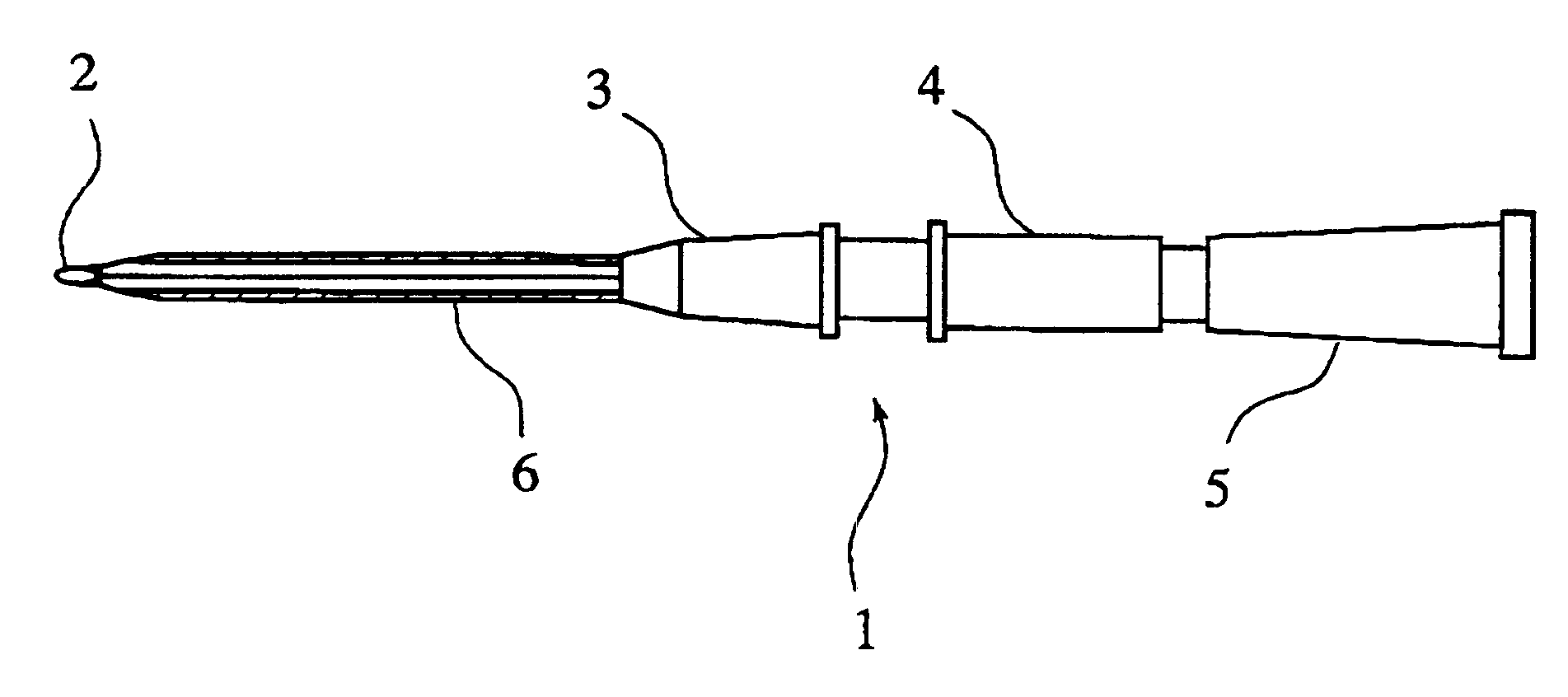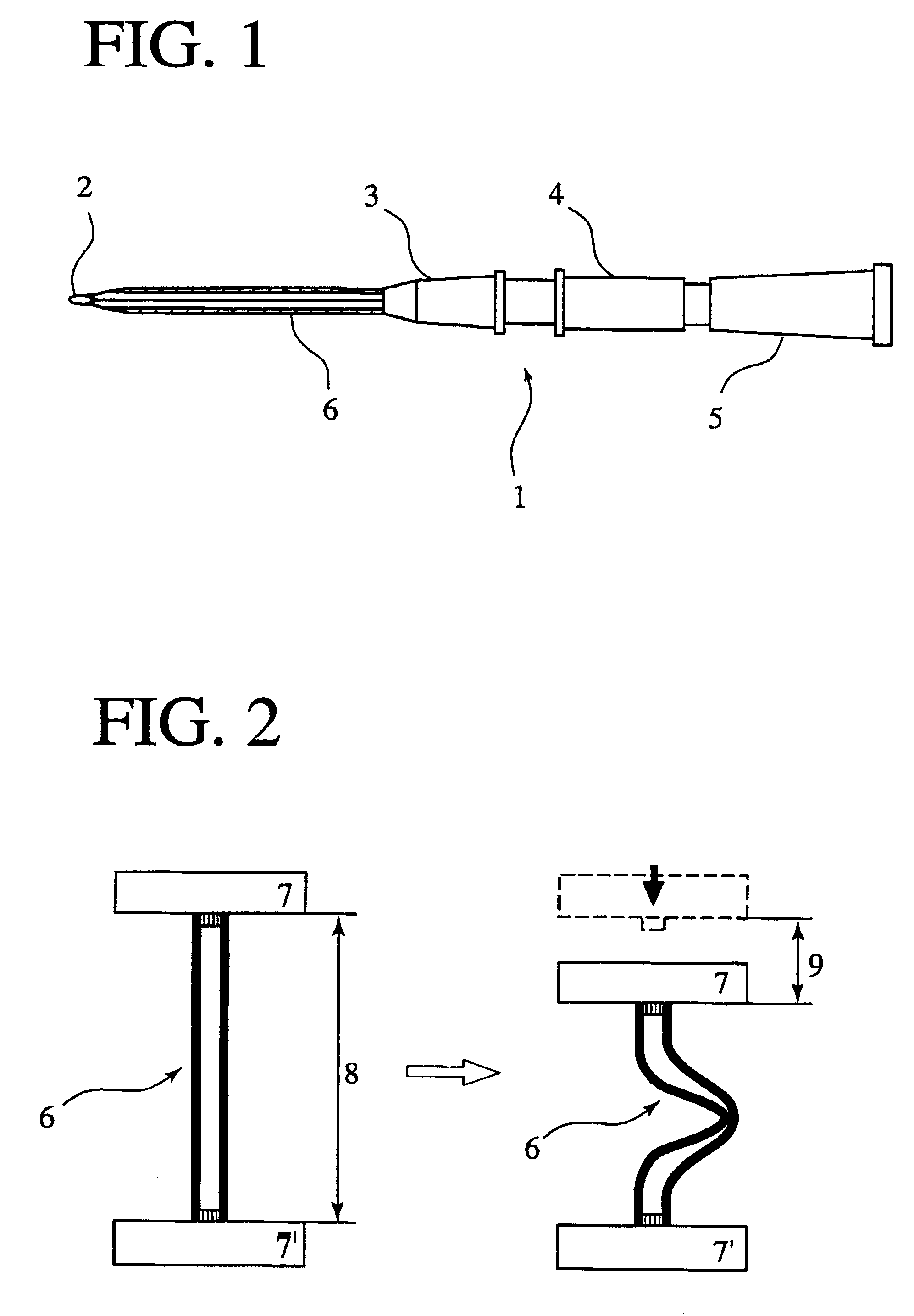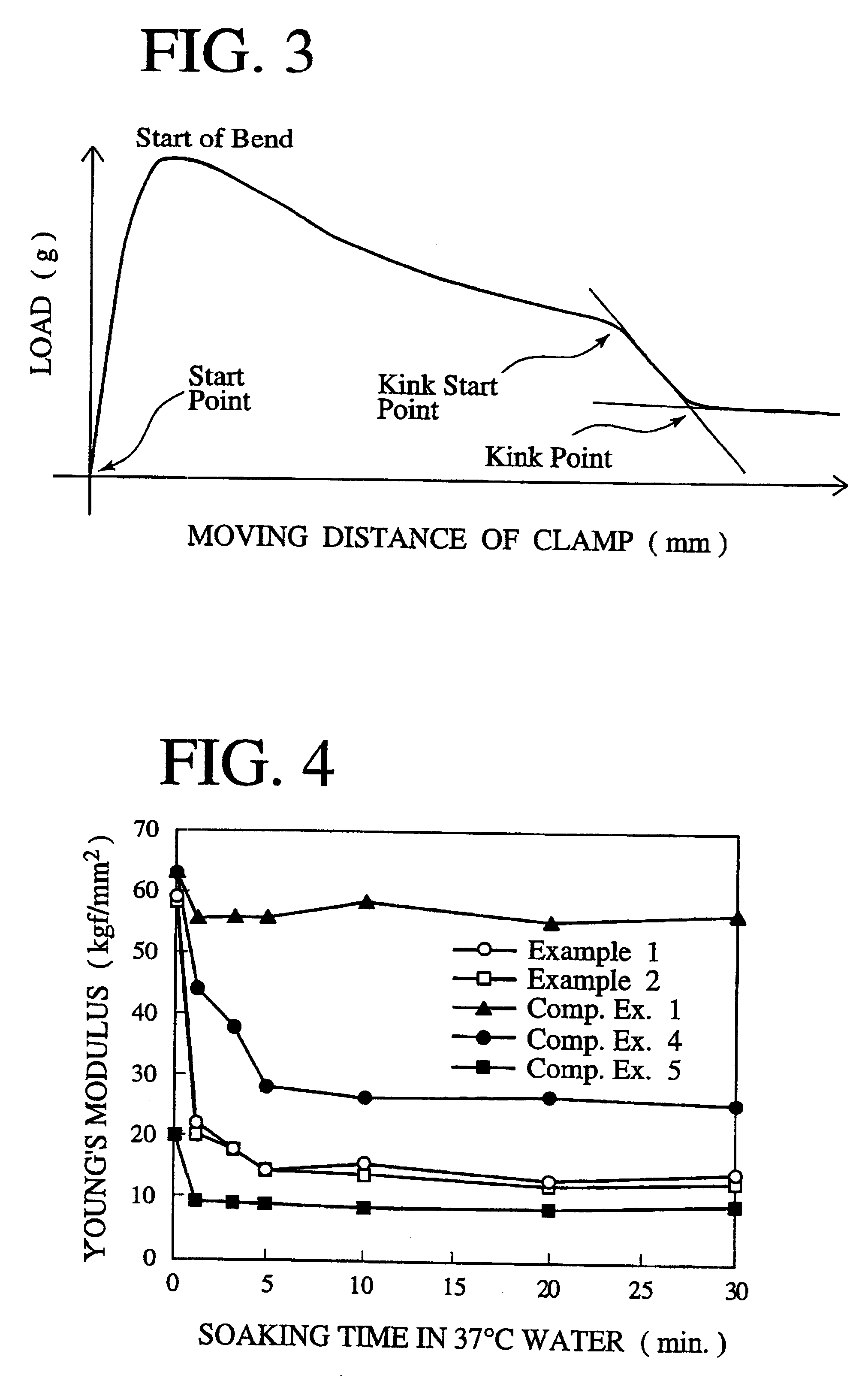Indwelling catheter
a catheter and indwelling technology, applied in the direction of catheters, intravenous devices, etc., can solve the problem that the additivity rule does not apply to the properties
- Summary
- Abstract
- Description
- Claims
- Application Information
AI Technical Summary
Benefits of technology
Problems solved by technology
Method used
Image
Examples
example 1
A polyurethane resin having a Shore hardness of 78 D and comprising 37 weight % of a soft segment made of polycaprolactone glycol having a molecular weight of 550 and a polyurethane resin having a Shore hardness of 68 D and comprising 42 weight % of a soft segment made of polycaprolactone glycol having a molecular weight of 2000 were melt-blended at a weight ratio of 6 / 4 to extrude a catheter 6 having an inner diameter of 0.65 mm and an outer diameter of 0.88 mm. This catheter 6 was fixed to a hub 3 with a caulking pin (not shown) such that an effective length of the catheter was 25 mm. An internal needle 2 fixed to one end of a needle hub 4 was coaxially inserted into the indwelling catheter 6. A filter cap 5 was finally disposed at the other end of the needle hub 4 to produce an indwelling needle 1 as shown in FIG. 1.
The catheter 6 used in this indwelling needle 1 was subjected to a tensile test by a tensile tester (Strograph T, manufactured by Toyo Seiki Seisakusho Co. Ltd.) in t...
example 2
A polyurethane resin having a Shore hardness of 70 D and comprising 46 weight % of a soft segment made of polycaprolactone glycol having a molecular weight of 550 and a polyurethane resin having a Shore hardness of 74 D and comprising 32 weight % of a soft segment made of polycaprolactone glycol having a molecular weight of 2000 were melt-blended at a weight ratio of 1 / 1 to extrude a catheter 6 having an inner diameter of 0.66 mm and an outer diameter of 0.89 mm. An indwelling needle 1 was produced with this catheter 6 in the same manner as in Example 1. Also, the catheter 6 was measured with respect to Young's modulus and kink resistance in the same manner as Example 1.
The Young's modulus and kink resistance of this catheter are shown in FIGS. 4 and 5. The Young's modulus was 58 kgf / mm.sup.2 under a dry condition at 25.degree. C., proving that this catheter had sufficient stiffness for insertion to the blood vessel. The catheter immediately became soft under a wet condition at 37.d...
example 3
A polyurethane resin having a Shore hardness of 76 D and comprising 32 weight % of a soft segment made of polycaprolactone glycol having a molecular weight of 1000 and a polyurethane resin having a Shore hardness of 70 D and comprising 37 weight % of a soft segment made of polycaprolactone glycol having a molecular weight of 2000 were melt-blended at a weight ratio of 1 / 1 to extrude a catheter 6 having an inner diameter of 0.65 mm and an outer diameter of 0.88 mm. An indwelling needle 1 was produced with this catheter 6 in the same manner as in Example 1. Also, the catheter 6 was measured with respect to Young's modulus and kink resistance in the same manner as Example 1.
The Young's modulus was as large as 58 kgf / mm.sup.2 under a dry condition at 25.degree. C., proving that this catheter had sufficient stiffness for insertion to the blood vessel. The catheter immediately became soft under a wet condition at 37.degree. C., exhibiting Young's modulus of 20 kgf / mm.sup.2 after 5 minutes...
PUM
| Property | Measurement | Unit |
|---|---|---|
| Temperature | aaaaa | aaaaa |
| Temperature | aaaaa | aaaaa |
| Length | aaaaa | aaaaa |
Abstract
Description
Claims
Application Information
 Login to View More
Login to View More - Generate Ideas
- Intellectual Property
- Life Sciences
- Materials
- Tech Scout
- Unparalleled Data Quality
- Higher Quality Content
- 60% Fewer Hallucinations
Browse by: Latest US Patents, China's latest patents, Technical Efficacy Thesaurus, Application Domain, Technology Topic, Popular Technical Reports.
© 2025 PatSnap. All rights reserved.Legal|Privacy policy|Modern Slavery Act Transparency Statement|Sitemap|About US| Contact US: help@patsnap.com



